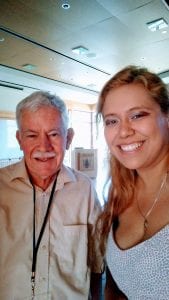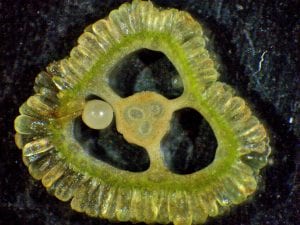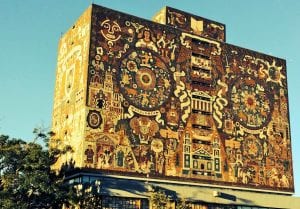The second year of my graduate school journey came like a flash. As I start to get into the grind of teaching, taking classes, and jumping into lab work, I also want to take time to reflect on my eventful summer. I had the chance to catch up with friends and mentors and collect Calochortus tissue samples in California. I also made new friends and learned new tools for studying morphology and comparative phylogenetics in Boston and Mexico City, respectively. Here are some highlights:
My trip to California was funded by SIPS’ own Schmittau-Novak grant, which allowed my to travel to CA to collect Calochortus venustus petal tissue for RNA-seq and differential gene expression analysis of two color morphs: brilliant red and stark white. My collections started in Paso Robles, where I found a  beautifully polymorphic population of pastel pinks and purples on the side of a road surrounded by vineyards. I then made my way up to Mt. Diablo to collect among hundreds of white mariposa lilies. I remember the 95 degree heat at 2300 ft. elevation almost as well as the tasty matcha tea I enjoyed with the Specht Lab at the UC Berkeley campus. By far, the most striking populations I came across were those that a fellow Calochorto-phile has been tracking for decades. She drove me to some of her hidden treasures, where we found hundreds of reds, whites,and everything in between- including “candy-cane striped” individuals! This was surprising given the dry years CA has been experiencing so I consider myself lucky to have found the support to hunt down and collect enough samples for at least a year’s worth of work.
beautifully polymorphic population of pastel pinks and purples on the side of a road surrounded by vineyards. I then made my way up to Mt. Diablo to collect among hundreds of white mariposa lilies. I remember the 95 degree heat at 2300 ft. elevation almost as well as the tasty matcha tea I enjoyed with the Specht Lab at the UC Berkeley campus. By far, the most striking populations I came across were those that a fellow Calochorto-phile has been tracking for decades. She drove me to some of her hidden treasures, where we found hundreds of reds, whites,and everything in between- including “candy-cane striped” individuals! This was surprising given the dry years CA has been experiencing so I consider myself lucky to have found the support to hunt down and collect enough samples for at least a year’s worth of work.
The adventures that followed were intensive short-courses on morphology and comparative  phylogenetics, both subjects I had not formally studied. I was awarded to take a short summer course on plant morphology at the Harvard Arnold Arboretum in Boston, with Peter Endress, Pam Diggle, Cyndy Jones, and Ned Friedman. I would recommend this hands-on course to anyone who wants a jumpstart in morphology- anyone interested in plant development needs a foundation in morphology and the best way to learn it is to start dissecting and looking under the scope. I also made
phylogenetics, both subjects I had not formally studied. I was awarded to take a short summer course on plant morphology at the Harvard Arnold Arboretum in Boston, with Peter Endress, Pam Diggle, Cyndy Jones, and Ned Friedman. I would recommend this hands-on course to anyone who wants a jumpstart in morphology- anyone interested in plant development needs a foundation in morphology and the best way to learn it is to start dissecting and looking under the scope. I also made  friends with a fellow geophyte lover, Cody Coyotee Howard from U of Florida. Of course, we couldn’t stop obsessing over the Amorphophallus titanum corms. One of the biggest highlights was chatting with Dr. Peter Endress who was kind enough to provide some insight into Calochortus petal color variation- he thinks it’s a cool plant too!
friends with a fellow geophyte lover, Cody Coyotee Howard from U of Florida. Of course, we couldn’t stop obsessing over the Amorphophallus titanum corms. One of the biggest highlights was chatting with Dr. Peter Endress who was kind enough to provide some insight into Calochortus petal color variation- he thinks it’s a cool plant too!
I had a one night rest stop at LAX before flying to my hometown, Mexico City, for another short course. The Phylogenetic Tools in R course was held at the Universidad Nacional Autónoma de México and was led by Liam Revell, Luke Harmon, Michael Alfaro, and Alejandro Gonzalez-Voyer. The course focused on the computational tools used to detect and visualize macroevolutionary patterns. I also made friends with awesome PhD students who are finishing up their degrees at UNAM, Itzi Fragoso and Veronica Zepeda (thank you for showing me the best food spots!), and Elisa Barreto from Brazil. This was the last year this NSF funded course was offered, but Liam’s Phytools website and GitHub page is updated regularly and is super useful. Ancestral state reconstruction and modeling character evolution doesn’t seem such a daunting task – but I’ll likely often reference my notes.
Now, back to sorting through hundreds of Calochortus pictures…


